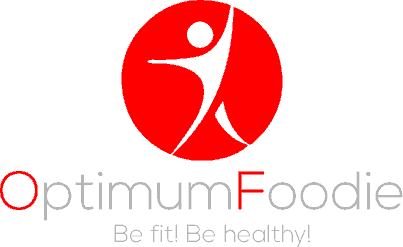Managing hypertension, diabetes and/ or high cholesterol levels, many times, requires the use of medications; however it should not be they only strategy as solely relying on only medications has resulted in many patients struggling to optimally manage these conditions.
So the question is what else should you be doing? Especially in this tough economic times, where the price of medications just keeps rising.
To optimally manage these conditions, there are areas of your life that need to be changed or can be improved upon. They include;
- Your diet
- Physical activity
- Your weight
- Alcohol intake
- Smoking1
Lifestyle modifications are an essential part and not an option in the management of these conditions. They are to be included as a part of the initial strategy or sometimes the only initial strategy depending on the severity.
Making the necessary changes in these areas can be sufficient for some individuals to manage their conditions without medications2. For those who will require medications, there are many benefits of employing both lifestyle modifications and medications, compared to just medications alone.
- Better control of your blood pressure, glucose or cholesterol levels, which reduces your risk of developing serious complications like heart attack, stroke, kidney damage and nerve damage.
- A potential reduction in the dose and/or number of medications that you currently use2, which could
- Reduce your pill load
- Reduce the cost of your medications
- Reduce your exposure to the side effects of higher doses of medications
- Make your medications work better
- Besides helping to manage your current medical conditions, lifestyle modifications can help prevent developing others, especially if you have risk factors2,3. (Note that having any of these three conditions can cause you to develop the others. For example, having diabetes can lead to hypertension and high blood cholesterol).
Your Diet
It is common knowledge that a healthy balanced diet is essential for good health. But even more importantly, the right diet can potentially help you lower your blood pressure, glucose and cholesterol levels2,3,4. For example, the diet targeted towards lowering blood pressure is called the DASH diet, an acronym for Dietary Approach to Stop Hypertension.
Physical Activity
Getting the right amount of exercise can help lower your blood pressure, glucose and/or cholesterol levels2,3,4, and help your medications work better.

You are recommended to have at least 30 minutes of moderate exercise at least 5 times a week i.e. 150 minutes of moderate exercise every week5. Examples of moderate exercise include, walking briskly, heavy cleaning (washing windows, vacuuming, mopping), light effort bicycling, tennis doubles, recreational badminton6.
Or 25 minutes of vigorous exercise 3-4 days per week5. Examples include, jogging, shoveling, carrying heavy load, fast bicycling, jump roping, basketball game, playing football, tennis singles.6
AND muscle strengthening exercises at least 2-3 times weekly5, which can include using weights or not. Those that do not require weights include press-ups, sit-ups, planks, squats and so on. If you are older, there are easier variations of strength exercises you could do.
Exercising does not have to take place in a gym, and all at a stretch. It can be broken down into smaller blocks of time. For example, you could do your 30 minutes as 10 minutes, at 3 different times of the day.5
Weight loss
Losing weight if you are overweight is one of the best things you can do towards optimally managing your blood pressure, glucose and/or cholesterol levels. Besides lowering their levels, losing weight can help your medications work better.7

Losing weight involves you doing two things:
- consuming less calories (energy from food) and
- exercising
To determine if you need to lose weight, you need to calculate your Body Mass Index (BMI). BMI shows the relationship between your weight and height and it is calculated thus:
BMI= weight (Kg)
height2 (m2)
Or you could use this calculator
Your result would determine if your weight is ideal or not as shown below

It is also important that you check your waist circumference, to ensure you are not carrying excess fat around your middle. Having excess weight around your waist is an indicator of the level of internal fat deposits which coat the heart, kidneys, liver digestive organs and pancreas. This can increase the risk of heart disease and stroke8. Ideal waist circumference for men is less than 94cm (about 37 inches) while that for women, is less than 80cm (about 31.5 inches).8
How to measure your waist
- Find the top of your hip bone and the bottom of your ribs.
- Breathe out normally.
- Place the tape measure midway between theses point and wrap it around your waist.
- Check your measurement.8
- Do not “suck in” your stomach and don’t hold your breath while measuring, despite how tempting it might be!
Alcohol
When managing hypertension, diabetes and/or cholesterol, it is preferable you avoid alcohol, or at least drink in moderation.
It is recommended that men have no more than 2 drinks a day , and women not more than one a day9. One drink is equivalent to:

Here are some things you should consider when consuming alcohol,
- Drink with food
- Drink slowly
- Avoid sugary mixed drinks and sweet wines9
Alcohol can affect you in the following ways-
- Having more than 3 drinks in one sitting can increase your blood pressure to unhealthy levels temporarily, but repeated binge drinking can lead to long term increase.
- Moderate amounts of alcohol can cause your blood glucose to rise, while excessive amounts can cause it to drop to dangerously low levels.
- Beer and sweet wine contain carbohydrates and may raise your blood sugar.
- Alcohol can interfere with your diabetes medications and insulin.
- Alcohol may increase your triglyceride levels ( a type of fat in your blood)
- Alcoholic drinks often have a lot of calories, making it more difficult to lose excess weight.9
Smoking
Smoking, although quite common in our communities, is a leading cause of death in most nations. It affects almost every organ in the body including the heart, blood vessels, mouth, eyes, bones, and bladder.

- The nicotine in cigarette smoke is a big part of the problem. It raises your blood pressure, glucose, cholesterol levels and heart rate; narrows your arteries and hardens their walls. (Arteries are the blood vessels that carry blood to different parts of your body). All these stress your heart and set you up for a heart attack, stroke, kidney failure and nerve damage.10,11,12
- Also, remember that second hand smoking (passive smoking) causes the same effects as with the person who does the actual smoking.
- Passive smoking occurs when you inhale the cigarette fumes of someone smoking around you.
- Please note that smoke from cigars and pipes contains the same harmful chemicals as the smoke from cigarettes.
- If you smoke, make quitting your No. 1 health priority. It could save your life!10
References
1 Heart Foundation Guide to management of hypertension (2008), Lifestyle modification. Available at: https://heartfoundation.org.au/images/uploads/publications/lifestyle-modification.pdf [Assessed 20/07/2016].
2 Lawrence J. Appel. Lifestyle Modification as a Means to Prevent and Treat High Blood Pressure, AJASN, 2003, 14(2) pp. S99-S102.
Available at: http://jasn.asnjournals.org/content/14/suppl_2/S99.full [Assessed 20/07/2016]
3 American Diabetes Association. Nutrition Recommendations and Interventions for Diabetes, Diabetes Care, 2008, 31(1) S61-S78. Available at: http://care.diabetesjournals.org/content/31/Supplement_1/S61 [Assessed 20/07/2016]
4 GS Mannu, MJS Zaman, A Gupta, Rehman HU, and PK Myint, Evidence of Lifestyle Modification in the Management of Hypercholesterolemia, Curr Cardiol Rev., 2013, 9(1) 2-14 doi: 10.2174/157340313805076313
5 American Heart Association (2015), American Heart Association Recommendations for Physical Activity in Adults. Available at: http://www.heart.org/HEARTORG/HealthyLiving/PhysicalActivity/FitnessBasics/ [Assessed 20/07/2016]
6 Havard T.H. Chan School of Public Health. Examples of Moderate and Vigorous Physical Activity. Available at: https://www.hsph.harvard.edu/obesity-prevention-source/moderate-and-vigorous-physical-activity/ [Assessed 20/07/2016]
7 Wilding JP, The importance of weight management in type 2 diabetes mellitus, Int J Clin Pract., 2014, 68(6) 682-91. Available at: http://www.ncbi.nlm.nih.gov/pubmed/24548654 [Assessed 20/07/2016]
8 Heart Foundation. Waist Measurement. Available at: http://www.heartfoundation.org.au/your-heart/know-your-risks/healthy-weight/waist-measurement [Assessed 20/07/2016]
9 WebMD, Diabetes and Alcohol, 2016. Available at: http://www.webmd.com/diabetes/guide/drinking-alcohol. [Assessed 20/07/2016]
10 WebMD, Quit Smoking for Your Heart’s Sake, 2015. Available at: http://www.webmd.com/hypertension-high-blood-pressure/guide/smoking-kicking-habit [Assessed 20/07/2016]
11 WebMD, Nicotine and Blood Sugar a Dangerous Combo, 2015. Available at: http://www.webmd.com/diabetes/news/20110328/nicotine-and-blood-sugar-bad-combination [Assessed 20/07/2-16]
12 WebMD, Cholesterol & Triglycerides Health Center, 2014. Available at: http://www.webmd.com/cholesterol-management/smoking-and-high-cholesterol [Assessed 20/07/2-16]

